A Safavid Mecca-centred World Map
Persia, 17th Centurythe circular brass base plate with centrally-pivoted rotating brass diametrical rule fixed with removable pin, a glazed circular recess for compass to lower part, the base plate finely engraved and chased with an elliptical grid overlaid with inscriptions in thuluth naming the geographical locations on the grid, vertical and horizontal axis denoting longitude and latitude, the elliptical grid surrounded by four cartouches filled with fine inscriptions in thuluth on stippled grounds with scrolling tendrils, the border with a series of further inscription-filled cartouches denoting the bearings, applied hinged sundial to upper edge, hinged latitude arc to left hand side, two applied splayed brass feet to upper side of reverse, the hexadecagonal wood box with hinged lid, silver hinges and clasp, entirely clad in rayskin, the interior with green velvet lining, further fitted museum archive box inscribed with inventory number 44.2014
22.5 cm. diam.; the box 25.5 cm. diam.FootnotesProvenance
Property of a senior diplomat, who acquired it in Iran in the 1970s.
Property of a private collector of noble descent, North America, from 2013.
On long term loan to the Harvard Art Museums, Cambridge, Massachusetts, 1998-2014 (Museum No: 40543.1/TL36577).
On long term loan to the Nelson Atkins Museum, Kansas City, Missouri, 2014-2022 (Museum No: 44.2014).
Exhibited
Glory and Prosperity: Metalwork of the Islamic World, Harvard Art Museum, Harvard University, February-July 2002.
From Rhubarb to Rubies: European Travelers to Safavid Iran, 1550-1700, Houghton Library, Harvard University, May-August 2008.
Roads of Arabia: Archaeology and History of the Kingdom of Saudi Arabia, Smithsonian Institution in association with the Saudi Commission for Tourism and Antiquities of the Kingdom of Saudi Arabia, Nelson Atkins Museum, Kansas City, April-July 2014.
Harvard University Art Museum, Long Term Loan, 1998-2014, Museum No. 40543.1/ TL36577.
Nelson Atkins Museum, Kansas, Long Term Loan, 2014-2022, Museum No. 44.2014.
Published
Glory and Prosperity: Metalwork of the Islamic World, Harvard Art Museum, Harvard University, February-July 2002.
From Rhubarb to Rubies: European Travelers to Safavid Iran, 1550-1700, Harvard Library Bulletin, 2012.
David A. King, In Synchrony with the Heavens, Studies in Astronomical Timekeeping and Instrumentation in Medieval and Islamic Civilisation, Vol 1, 2004.
David A. King, Maps and Mapmaking: Islamic World Maps Centred on Mecca in, H. Selin, Encyclopaedia of the History of Science, Technology, and Medicine in Non-Western Cultures, Springer, Dordrecht, 2008.
Jan P Hogendijk , Al Rewaq, History and Heritage, Three Instruments for finding the direction and distance to Mecca, January 2018.
The inscriptions
dar in sahra keh dar ma'na zamin o asmanast
suy-e qotb-e janubi ro konad chon morgh-e nili par
'This expanse which depicts the Earth and Sky,
turns its face to the south pole like the flight of the Indigo bird.'
agar sattara ra bar 'arz o tul-e shahr bogzari
shavi az qebleh o bu'd-e balad az qebleh mustahzar
'If you place the diametrical rule at (the point corresponding to) the latitude and longitude of a city,
You will be shown the qibla and the distance of the town from the qibla' (i.e. Mecca).
motabeq gar koni 'arz-e balad ba safheh-ye sa'at
suy-ye tashkhis-e sa'at zill-e shakhis gardadat rahbar
'If you align the local latitude with the plate for the hours,
The shadow of the gnomon will be your guide for establishing the hour.'
hoseyn az hosn-e san'at yek jahan dar safheh sazad
ze yumn-e bakht-e sayf al-dawlah dara-ye jahan ruz
'Through the beauty of his craft Husayn has created a World on a page,
Through the auspiciousness of the fortune of Sayf al-Dawlah, who holds the light of the world'
This extraordinary Mecca-centred world map is one of three known examples, the other two having come to light in 1989 and 1995 respectively. In the words of academic Dr David King, the discovery of this class of instrument vies "with any of the spectacular instruments and manuscripts located during this century as major discoveries in the history of early science in general and the history of medieval cartography in particular" (King, World-Maps for Finding the Direction and Distance to Mecca, 1999, p. 371). The first two examples found are known in the literature as Map "A" and "B". Their discovery inspired the scholar David A. King, then Professor of the History of Science at the Goethe University Frankfurt, to write a major treatise, World-Maps for Finding the Direction and Distance to Mecca (1999). This publication raised awareness which led to the recognition of the present lot - a finer, complete, and possibly earlier example by the same maker. Map "A" was exhibited at both the Musée du Louvre and the Germanisches Nationalmuseum. "A", however, consists of just a base plate and the diametrical rule. It is unsigned and lacks the sundial armature. It also lacks the latitude arc and compass needle. Map "A" was sold at Christie's, Cartography, 5 June 2000, lot 25, and its importance was acknowledged by its well-deserved place in the Al Sabah Collection, currently on loan to the Dar Al-Athar Al-Islamiyyah, Kuwait. It was perhaps the most desirable known example until the present lot was rediscovered in 2002. Map "B" is a complete but less refined example which is considered by some to have been produced at a later date.
The present example, which Dr King has labelled "C", is the only instrument which is both signed and inscribed with an honorific referencing a patron. On learning of its existence, Dr King analysed "C" in his work, Synchrony with the Heavens (2004), volume 1, part VIIc, "Safavid World-Maps Centred on Mecca", where he offers new insights. He and his colleague, Dutch scholar Jan Hogendijk, have convincingly shown that the cartography employed on the instrument is a remarkable Islamic invention.
From 1998 to 2014, Map "C" was on long-term loan to the Harvard Art Museums. When the loan was due to expire the present owner-collector was inspired by Dr King's pioneering discovery and scholarship to purchase the instrument directly from the lender. Since then, they have generously made the instrument available for study and have lent it to the Nelson-Atkins Museum of Art in Kansas City (2014-2022). It was exhibited in the prestigious traveling exposition Roads of Arabia: Archaeology and History of the Kingdom of Saudi Arabia (2014).
The exciting, recent discovery of the Mecca-centred maps, "A", "B", and "C" has profoundly reshaped our understanding of medieval science and cartography. Example "C", the only known complete example in this category signed by its maker, is a testament not only to the sophistication of mathematics and astronomy in the service of Islam, but also to the craftsmanship of Safavid Persia. The rare instrument contains a sophisticated map of the "World on a page" and an accurate device to find the sacred direction and distance to Mecca from all parts of the medieval Islamic world. The projection used on the map is based on the work of 9th and 10th Century Islamic mathematicians and astronomers, and is a type not rediscovered in the West until the 20th century. It belongs to a rare and advanced class of Mecca-centred world maps which is perhaps considered the ultimate achievement of Islamic mathematical geography used to determine the qibla, the sacred direction.
Muslims are guided by the Qur'an to face the sacred Kaaba in Mecca during their prayers and other acts of religious observance because it is a pointer to the presence of the Divine, as highlighted in the verse: "So turn your face in the direction of Al-Masjid Al-Haraam (at Mecca). And wheresoever you people are, turn your faces (in prayer) in that direction" [al-Baqarah 2:144]. Typically, the sacred direction that one faces (referred to as qibla in all languages of the Islamic world) was ascertained from tables contained in astronomical handbooks known as zijes. Of course, not everyone had access to the tables, and instrumental and graphical methods for finding the qibla were devised to help Muslims orient themselves in prayer. Some of these devices were portable and suitable for travellers who needed to know the qibla at each stop on their journey.
The present instrument, "C", contains just such a qibla indicator. However, it surpasses all other varieties of qibla indicators in its use of a map that embodies Mecca as the centre of the Islamic world, and a rotating rule which enables the user to easily find the qibla from any location engraved on its base plate. Furthermore, the user can also establish the precise distance to Mecca. The beautiful, gridded map is based on the mathematical and geographical knowledge of Muslim scholars who started compiling the zijes in the 9th century, but is rendered in a novel projection not centred on the polar regions (as used in astrolabes). This projection preserves direction and distance to Mecca.
Muslim scholars between the 9th and 16th Centuries produced numerous innovative maps of the world on vellum and paper, many of which survive, some in fragments; the most notable is perhaps Idrisi's "Tabula Rogeriana" compiled in 1154. But these maps rather crudely represented the world, and like all projections of the spherical world onto a plane, they have distortions and cannot uniformly preserve values such as distance or angle for all locations. What elevates the map projection that we see on this instrument above the other maps is that the grid does not distort angles from the centre point (Mecca) or the sine of the distance to Mecca. Since the rule was calibrated according to the sine of the distance, the user could rotate it not only to find the qibla but also the distance to Mecca. Until Maps "A", "B", and "C" were discovered, such sophisticated cartography was not known to have existed before the 20th century (Figure 3 in printed catalogue).
Dr King has argued that the mathematical foundation for the grid was developed in 9th Century Baghdad (King, World-Maps for Finding the Direction and Distance to Mecca, 1999, pp. 61-62, 350). He has also shown that the values for longitude and latitude for cities included on this instrument derived from a lost Timurid geographical table compiled in the Samarkand region in the mid-15th century. The data from this table was also used on later Persian astrolabes as well as the maps on "A", "B", and "C".
In 1993, Dr King stumbled upon a later version of the previously lost Timurid table. This version was nestled within an 18th-century manuscript treatise on the astrolabe entitled, Maqsad al-talib wa-muntaha 'l-matalib, and was written by 'Abd al-Rahim ibn Muhammad. It is currently in the British Library in London (MS 7489, fols.53r-58v). This invaluable table gives qibla values, distances measured in farsakhs (a traditional Persian unit corresponding to approximately 3 miles), and the coordinates for 274 distinct locations. The 102 localities on Map "C" and their correctly-computed qibla and distance values are to be found in this table, as is the case of "A" and "B".
In 2001, Jan Hogendijk rediscovered two primary sources mentioning the use of conic sections (i.e. ellipses) for the determination of the qibla. One text is from 10th Century Baghdad and the other from 11th Century Isfahan. These texts proved Dr King's strong hypothesis of the early Islamic mathematics underlying the retroazimuthal cartographic grids preserving distance and direction to Mecca on Safavid world maps. Thus, even though the cartographical grids on "A", "B", and "C" are 'new' to the history of Islamic science, the geographical knowledge displayed on them is in the tradition of Islamic geographical tables, of which the Timurid table represents the finest example.
The Maker and His Patron
The world map in question is believed to have originated from Isfahan, a city renowned for its masterful metal craftsmanship, especially its intricately designed astronomical tools. The fourth cartouche names both an instrument maker and a patron, whose identities remain elusive. The maker is identified only as Husayn, an individual which Dr David King equates with a "pseudo-Hasan Husayn" who may have been the maker of various qibla indicators and sundials produced in the same period, and who was most likely operating in close conjunction with, or in the same workshop as Muhammad Husayn who is identified as the maker of the second world map identified by Dr King. It is evident that the artisan behind this masterpiece was among the top echelons of instrument makers from the period. The intricate design and aesthetic appeal of the instrument align with the pinnacle of late 17th Century Iranian metalwork. The equally elusive Sayf Al-Dawlah is identified as the patron of the instrument, an honorific broadly used throughout the Islamic World, meaning "Protector of the Realm". This title would have been bestowed on a Safavid courtier, nobleman or public official.
The Instrument
The brass base plate has a diameter of 225 mm. The top side is engraved with a Mecca-centred map, azimuth scale, and cartouches of instructions and information. The top also carries a rotating rule, an inset compass, and the armature of the inclining sundial. The underside has two turned feet and straps to secure the compass box.
Map - The engraving of the map features two perpendicular axes, with their intersection pinpointing Mecca. A hole is pierced through the map at this point to accommodate the bolt of the rotating rule. The vertical axis represents the meridian of Mecca at 77° East of a prime meridian west of the Canary Islands, in keeping with medieval tradition. Perpendicular to the horizontal axis are 24 parallel meridians, both eastward and westward, spaced at intervals of 2° longitude ranging from 29° to 125°. Their "footing" starts a lightly engraved construction line drawn horizontally across the base at the location of a latitude of 0°. Latitude arcs cross these meridians as a series of 21 curved horizontal lines spaced every 2° and spanning 8° to 50°. The design creates a map grid comprising 2° x 2° cells. Within the map grid, a longitude scale in thuluth script occupies the band between latitudes 8° and 10°. The complementary latitude scale in thuluth script fills the band between longitudes 51° and 53°. Alongside the latitude scale is a "climate" scale in nashki script. This particular scale adheres to the ancient method of dividing latitudes into seven distinct "climates".
Gazetteer - On this grid, 102 distinct geographical locations are indicated with punched rings (circles within a slightly larger circles). Adjacent to these markers, the names of the locations are beautifully inscribed in thuluth script. Table 1 lists the locations on the map, which cover the reach of the Muslim world from Cordoba in al-Andalus eastward to India and China. The vertical span ranges from Europe and the tribal territories by the Volga River in modern day Russia southward to Yemen and Ethiopia. Given the location of the instrument's maker, many cities in Safavid Persia are represented. Of particular note are the elaborate and poetic labels used for certain prominent cities like Athens, referred to as Madina al-Hukama, or 'City of Philosophers'. Furthermore, the mapmaker has avoided the inclusion of natural landmarks such as coastlines, mountain ranges, or rivers in order to maintain the satisfying simplicity of the map, appropriate to its function.
Azimuth Scale - The plate's circumference is divided into 360°, with increments marked every 10° in thuluth script. Each of these segments is further split by a line at 5° with punched dots marking every degree.
Diametrical Rule - The diametrical rule pivots around the centre of the map by means of a pin going through the point of Mecca. The rule is bevelled along its reading edge. One half of the rule has a non-uniform scale for the sine of the distance measured and divided into farsakhs from 44 to 1022. The farsakh was a Persian measure equivalent to 3 miles and 22.2 farsakhs equaled an arc of 1° of a great circle on the terrestrial globe. The other half of the rule is divided into degrees. When the rule's reading edge was put on the point on the map corresponding to the latitude and longitude of a place, the user could also see the direction to Mecca by where the end of the rule reading edge intercepted the azimuth scale around the edge of the base plate. The user could also read off the distance to Mecca from the rule's scales in terms of miles or degrees of a great circle. This was the distance a bird would fly, not the travel distance in practical terms.
Magnetic Compass - A compass box is inset in the southern portion of the base plate below the map. The magnetic compass has an engraved wind rose of 8 points. The cardinal points have split rays that are half shaded. The intercardinal points have pinnate rays in the form of foliate motifs. The blued needle has a heart-shaped point at the southern end and a diamond point at the northern end.
Universal Inclining Sundial - The inclining dial has an hour scale inscribed on a circular band, with hours divided from 4 am to 8 pm every 5 minutes. The hours are marked with stylized variants of Iranian forms of Arabic numerals counting down to noon and up from noon. Quarter hours are marked by dots and half hours by a floral motif. The folding gnomon is an open triangle for a latitude of 60° when the hour scale is flush with the lower plate. The scale on the folding latitude arm ranges from 0° to 60° and is subdivided every degree. The 60° division is at the bottom of the arm near the hinge. The numerals on the latitude scale are the same sort as the Iranian variants of Arabic numerals on the hour scale. A bracket attached to the underside of the hour scale has a slot through which the latitude arm may go. It has a locking screw to keep the hour scale from sliding down the arm once it has been set to the correct latitude of the user. The sundial is a type more commonly seen in Europe and demonstrates the transmission of cultural ideas. It was suitable for travellers who might find themselves anywhere between a latitude of 0° and 60°, enabling them to establish the time. What it adds to this portable Mecca-centred map and qibla indicator is the opportunity for the owner to determine the times of daily prayers while on the road.
Cartouches - Surrounding the primary cartographic grid are four cartouches, inscribed in thuluth script, each bearing specific instructions for using various components of the instrument. The first, located to the right of the compass box (when viewed and read from the north side of the instrument) describes the compass's function in aligning the instrument. The second, to the left of the compass, elaborates on the world map's purpose and how to use the rule. Above the map, the third details the usage of the sundial, while the fourth names the maker and patron. The language used is Persian. The instructions are poetic.
Cartouche 1
dar in sahra keh dar ma'na zamin o asmanast
suy-e qotb-e janubi ro konad chon morgh-e nili par
'This expanse which depicts the Earth and Sky,
turns its face to the south pole like the flight of the Indigo bird.'
Cartouche 2
agar sattara ra bar 'arz o tul-e shahr bogzari
shavi az qebleh o bu'd-e balad az qebleh mustahzar
'If you place the diametrical rule at (the point corresponding to) the latitude and longitude of a city,
You will be shown the qibla and the distance of the town from the qibla' (i.e. Mecca).
Cartouche 3
motabeq gar koni 'arz-e balad ba safheh-ye sa'at
suy-ye tashkhis-e sa'at zill-e shakhis gardadat rahbar
'If you align the local latitude with the plate for the hours,
The shadow of the gnomon will be your guide for establishing the hour.'
Cartouche 4
hoseyn az hosn-e san'at yek jahan dar safheh-i sazad
ze yumn-e bakht-e sayf al-dawlah dara-ye jahan ruz
'Through the beauty of his craft Husayn has created a World on a page,
Through the auspiciousness of the fortune of Sayf al-Dawlah, who holds the light of the world.'
Sacred Geography: Cities Shown on the World Map
Table 1 (Arranged alphabetically within modern geographical areas, moving from East to West)
China and Central Asia
Badakhshan
Bukhara
Chach (Tashkent)
Gurganj
Kashghar
Kath (modern Beruniy, Ubzekistan)
Khanbaliq (Peking, modern-day Beijing)
Khotan
Marv
Qabaliq (probably in Xinjiang)
Qarakorum
Taraz (in Kazakhstan)
Tibet
Tunakand
Urgench
India, Pakistan, and Afghanistan
Agra
Balkh
Bamiyan
Burhanpur
Dawlatabad
Daybul (Debal, near modern Karachi)
Delhi
Ghaznin (modern Ghazni)
Herat
Hyderabad
Jaunpur
Kabul
Khaliq (unidentified, possibly in Balochistan)
Kij (in West Pakistan)
Makran (area in modern-day Pakistan and Iran)
Mansura
Multan
Pahalwara
Qandahar
Iran, Caucasus, and Southern Russia
Astarabad
Bajnar (unidentified location)
Balanjard (i.e. Balanjar, the Khazar capital in the North Caucasus)
Bam
Bastam
Bulghar (Ulyanovsk on the Volga)
Damavand
Darband (in modern-day Daghestan)
Ganjah (Ganca in modern-day Azerbayjan)
Hurmuz
Isfahan
Jiruft
Kashan
Karaj
Kazerun
Kerman
Kermanshah
Khabis (modern-day Shahdad)
Khoy
Lar
Mashhad i-Muqaddas
Qazvin
Shiraz
Sistan
Shustar
Tabas
Tabriz
Tehran
Tiflis (Tbilsi)
Turshiz
Yazd
Middle East: Arabian Peninsula, Levant, Iraq, Anatolia, and Morea
'Adan (Aden)
'Amuriyya (Amorium in Anatolia)
Arzan al-Rum (Erzurum)
Baghdad
Bahrayn
Basra
Bayt al-Muqaddas (Jerusalem)
Damar (in the Yemen)
Dimashq (Damascus)
Halab (Aleppo)
Kufa
Madinat al-Hukuma' (City of Philosophers, i.e. Athens)
Al-Madina al-Tayyiba(Medina)
Maqiduniyya (Macedonia)
Makka (Mecca)
Masisa (modern Misis in Anatolia)
Mosul
Qatif (in modern-day Saudi Arabia)
Qarqisiya (modern Al-Busayra, Syria)
Qustantiniyya (Constantinople)
Quniya (Konya)
Al-Rahba (Qal'at al-Rahba in Eastern Syria)
Sana'a
Sivas
Sohar (Oman)
Sur (Tyre)
Zabid (in the Yemen)
Africa
Bajja (Beja in Tunisia)
Damyat (Damietta)
Dunqula shahr-i Nuba (Dongola in Sudan)
Fas (Fez)
Habasha (Abyssinia)
Iskandariyya (Alexandria)
Misr (Cairo)
Qayrawan (Kairouan)
Qumis (Quus in Southern Egypt)
Sus-i Aqsa (Taroudannt in Morocco)
Tahur-i 'Ulya (i.e. Upper Tahart in the Maghrib)
Tarablus-i Maghrib (Tripoli in Libya)
Spain
Qurtuba (Cordoba)
BIBLIOGRAPHY
David A. King, World-Maps for Finding the Direction and Distance of Mecca: Innovation and Tradition in Islamic Science (Leiden: Brill, 1999).
David A. King, "The Sacred Geography of Islam", pp. 161-178 in Mathematics and the Divine: A Historical Study, ed. T. Koetsier and L. Bergmans, (Dordrecht: Elsevier, 2005), at www.academia.edu/37613561/.
David A. King, ""Husayn, Hasan and Muhammad", p. 540 in The Biographical Encyclopaedia of Astronomers, ed. Thomas A. Hockey (New York: Springer, 2007), available at https://islamsci.mcgill.ca/RASI/BEA/Husayn_BEA.pdf
David A. King, "Finding the Qibla by the Sun and Stars: A Survey of the Sources of Islamic Sacred Geography", Zeitschrift für Geschichte der arabischen-islamischen Wissenschaften 22 (2020): 91-141, at www.academia.edu/38244518/.
David A. King, "The Culmination of Islamic Sacred Geography. I: The World about the Kaaba (Folk Astronomy), and II: The World about Mecca (Mathematical Geography)", pp. 179-188 in Geography and Religious Knowledge in the Medieval World, ed. C. Mauntel (Berlin, 2021).
Carl Schoy, "Die Mekka- oder Qiblakarte (Gegenazimutale mittabstandstreue Projektion mit Mekka als Kartenmitte)", Kartographische und schulgeographische Zeitschrift 6 (1917), pp.184-185 and map.
Bonhams would like to thank following parties for their assistance in the preparation of this text: Professor Jan Hogendijk of the University of Utrecht for his assistance in explaining the mathematics underlying the present instrument; Dr Sara J Schechner, the David P. Wheatland Curator of the Collection of Historical Scientific Instruments, Harvard University for assistance in composition of the text; and Professor David King, for his invaluable and extensive research in the field.
'P' indicates that this is a Premium Lot. If you wish to bid on this lot, 'please refer to Auction Information for bidding information.
Important Notice to Buyers
Some countries, e.g., the US, prohibit or restrict the purchase by its citizens (wherever located) and/or the import of certain types of works of particular origins. As a convenience to buyers, Bonhams has marked with the symbol R all lots of Iranian (Persian) and Syrian origin. It is each buyer's responsibility to ensure that they do not bid on or import a lot in contravention of the sanctions or trade embargoes that apply to them.
A Safavid Mecca-centred World Map
Persia, 17th Centurythe circular brass base plate with centrally-pivoted rotating brass diametrical rule fixed with removable pin, a glazed circular recess for compass to lower part, the base plate finely engraved and chased with an elliptical grid overlaid with inscriptions in thuluth naming the geographical locations on the grid, vertical and horizontal axis denoting longitude and latitude, the elliptical grid surrounded by four cartouches filled with fine inscriptions in thuluth on stippled grounds with scrolling tendrils, the border with a series of further inscription-filled cartouches denoting the bearings, applied hinged sundial to upper edge, hinged latitude arc to left hand side, two applied splayed brass feet to upper side of reverse, the hexadecagonal wood box with hinged lid, silver hinges and clasp, entirely clad in rayskin, the interior with green velvet lining, further fitted museum archive box inscribed with inventory number 44.2014
22.5 cm. diam.; the box 25.5 cm. diam.FootnotesProvenance
Property of a senior diplomat, who acquired it in Iran in the 1970s.
Property of a private collector of noble descent, North America, from 2013.
On long term loan to the Harvard Art Museums, Cambridge, Massachusetts, 1998-2014 (Museum No: 40543.1/TL36577).
On long term loan to the Nelson Atkins Museum, Kansas City, Missouri, 2014-2022 (Museum No: 44.2014).
Exhibited
Glory and Prosperity: Metalwork of the Islamic World, Harvard Art Museum, Harvard University, February-July 2002.
From Rhubarb to Rubies: European Travelers to Safavid Iran, 1550-1700, Houghton Library, Harvard University, May-August 2008.
Roads of Arabia: Archaeology and History of the Kingdom of Saudi Arabia, Smithsonian Institution in association with the Saudi Commission for Tourism and Antiquities of the Kingdom of Saudi Arabia, Nelson Atkins Museum, Kansas City, April-July 2014.
Harvard University Art Museum, Long Term Loan, 1998-2014, Museum No. 40543.1/ TL36577.
Nelson Atkins Museum, Kansas, Long Term Loan, 2014-2022, Museum No. 44.2014.
Published
Glory and Prosperity: Metalwork of the Islamic World, Harvard Art Museum, Harvard University, February-July 2002.
From Rhubarb to Rubies: European Travelers to Safavid Iran, 1550-1700, Harvard Library Bulletin, 2012.
David A. King, In Synchrony with the Heavens, Studies in Astronomical Timekeeping and Instrumentation in Medieval and Islamic Civilisation, Vol 1, 2004.
David A. King, Maps and Mapmaking: Islamic World Maps Centred on Mecca in, H. Selin, Encyclopaedia of the History of Science, Technology, and Medicine in Non-Western Cultures, Springer, Dordrecht, 2008.
Jan P Hogendijk , Al Rewaq, History and Heritage, Three Instruments for finding the direction and distance to Mecca, January 2018.
The inscriptions
dar in sahra keh dar ma'na zamin o asmanast
suy-e qotb-e janubi ro konad chon morgh-e nili par
'This expanse which depicts the Earth and Sky,
turns its face to the south pole like the flight of the Indigo bird.'
agar sattara ra bar 'arz o tul-e shahr bogzari
shavi az qebleh o bu'd-e balad az qebleh mustahzar
'If you place the diametrical rule at (the point corresponding to) the latitude and longitude of a city,
You will be shown the qibla and the distance of the town from the qibla' (i.e. Mecca).
motabeq gar koni 'arz-e balad ba safheh-ye sa'at
suy-ye tashkhis-e sa'at zill-e shakhis gardadat rahbar
'If you align the local latitude with the plate for the hours,
The shadow of the gnomon will be your guide for establishing the hour.'
hoseyn az hosn-e san'at yek jahan dar safheh sazad
ze yumn-e bakht-e sayf al-dawlah dara-ye jahan ruz
'Through the beauty of his craft Husayn has created a World on a page,
Through the auspiciousness of the fortune of Sayf al-Dawlah, who holds the light of the world'
This extraordinary Mecca-centred world map is one of three known examples, the other two having come to light in 1989 and 1995 respectively. In the words of academic Dr David King, the discovery of this class of instrument vies "with any of the spectacular instruments and manuscripts located during this century as major discoveries in the history of early science in general and the history of medieval cartography in particular" (King, World-Maps for Finding the Direction and Distance to Mecca, 1999, p. 371). The first two examples found are known in the literature as Map "A" and "B". Their discovery inspired the scholar David A. King, then Professor of the History of Science at the Goethe University Frankfurt, to write a major treatise, World-Maps for Finding the Direction and Distance to Mecca (1999). This publication raised awareness which led to the recognition of the present lot - a finer, complete, and possibly earlier example by the same maker. Map "A" was exhibited at both the Musée du Louvre and the Germanisches Nationalmuseum. "A", however, consists of just a base plate and the diametrical rule. It is unsigned and lacks the sundial armature. It also lacks the latitude arc and compass needle. Map "A" was sold at Christie's, Cartography, 5 June 2000, lot 25, and its importance was acknowledged by its well-deserved place in the Al Sabah Collection, currently on loan to the Dar Al-Athar Al-Islamiyyah, Kuwait. It was perhaps the most desirable known example until the present lot was rediscovered in 2002. Map "B" is a complete but less refined example which is considered by some to have been produced at a later date.
The present example, which Dr King has labelled "C", is the only instrument which is both signed and inscribed with an honorific referencing a patron. On learning of its existence, Dr King analysed "C" in his work, Synchrony with the Heavens (2004), volume 1, part VIIc, "Safavid World-Maps Centred on Mecca", where he offers new insights. He and his colleague, Dutch scholar Jan Hogendijk, have convincingly shown that the cartography employed on the instrument is a remarkable Islamic invention.
From 1998 to 2014, Map "C" was on long-term loan to the Harvard Art Museums. When the loan was due to expire the present owner-collector was inspired by Dr King's pioneering discovery and scholarship to purchase the instrument directly from the lender. Since then, they have generously made the instrument available for study and have lent it to the Nelson-Atkins Museum of Art in Kansas City (2014-2022). It was exhibited in the prestigious traveling exposition Roads of Arabia: Archaeology and History of the Kingdom of Saudi Arabia (2014).
The exciting, recent discovery of the Mecca-centred maps, "A", "B", and "C" has profoundly reshaped our understanding of medieval science and cartography. Example "C", the only known complete example in this category signed by its maker, is a testament not only to the sophistication of mathematics and astronomy in the service of Islam, but also to the craftsmanship of Safavid Persia. The rare instrument contains a sophisticated map of the "World on a page" and an accurate device to find the sacred direction and distance to Mecca from all parts of the medieval Islamic world. The projection used on the map is based on the work of 9th and 10th Century Islamic mathematicians and astronomers, and is a type not rediscovered in the West until the 20th century. It belongs to a rare and advanced class of Mecca-centred world maps which is perhaps considered the ultimate achievement of Islamic mathematical geography used to determine the qibla, the sacred direction.
Muslims are guided by the Qur'an to face the sacred Kaaba in Mecca during their prayers and other acts of religious observance because it is a pointer to the presence of the Divine, as highlighted in the verse: "So turn your face in the direction of Al-Masjid Al-Haraam (at Mecca). And wheresoever you people are, turn your faces (in prayer) in that direction" [al-Baqarah 2:144]. Typically, the sacred direction that one faces (referred to as qibla in all languages of the Islamic world) was ascertained from tables contained in astronomical handbooks known as zijes. Of course, not everyone had access to the tables, and instrumental and graphical methods for finding the qibla were devised to help Muslims orient themselves in prayer. Some of these devices were portable and suitable for travellers who needed to know the qibla at each stop on their journey.
The present instrument, "C", contains just such a qibla indicator. However, it surpasses all other varieties of qibla indicators in its use of a map that embodies Mecca as the centre of the Islamic world, and a rotating rule which enables the user to easily find the qibla from any location engraved on its base plate. Furthermore, the user can also establish the precise distance to Mecca. The beautiful, gridded map is based on the mathematical and geographical knowledge of Muslim scholars who started compiling the zijes in the 9th century, but is rendered in a novel projection not centred on the polar regions (as used in astrolabes). This projection preserves direction and distance to Mecca.
Muslim scholars between the 9th and 16th Centuries produced numerous innovative maps of the world on vellum and paper, many of which survive, some in fragments; the most notable is perhaps Idrisi's "Tabula Rogeriana" compiled in 1154. But these maps rather crudely represented the world, and like all projections of the spherical world onto a plane, they have distortions and cannot uniformly preserve values such as distance or angle for all locations. What elevates the map projection that we see on this instrument above the other maps is that the grid does not distort angles from the centre point (Mecca) or the sine of the distance to Mecca. Since the rule was calibrated according to the sine of the distance, the user could rotate it not only to find the qibla but also the distance to Mecca. Until Maps "A", "B", and "C" were discovered, such sophisticated cartography was not known to have existed before the 20th century (Figure 3 in printed catalogue).
Dr King has argued that the mathematical foundation for the grid was developed in 9th Century Baghdad (King, World-Maps for Finding the Direction and Distance to Mecca, 1999, pp. 61-62, 350). He has also shown that the values for longitude and latitude for cities included on this instrument derived from a lost Timurid geographical table compiled in the Samarkand region in the mid-15th century. The data from this table was also used on later Persian astrolabes as well as the maps on "A", "B", and "C".
In 1993, Dr King stumbled upon a later version of the previously lost Timurid table. This version was nestled within an 18th-century manuscript treatise on the astrolabe entitled, Maqsad al-talib wa-muntaha 'l-matalib, and was written by 'Abd al-Rahim ibn Muhammad. It is currently in the British Library in London (MS 7489, fols.53r-58v). This invaluable table gives qibla values, distances measured in farsakhs (a traditional Persian unit corresponding to approximately 3 miles), and the coordinates for 274 distinct locations. The 102 localities on Map "C" and their correctly-computed qibla and distance values are to be found in this table, as is the case of "A" and "B".
In 2001, Jan Hogendijk rediscovered two primary sources mentioning the use of conic sections (i.e. ellipses) for the determination of the qibla. One text is from 10th Century Baghdad and the other from 11th Century Isfahan. These texts proved Dr King's strong hypothesis of the early Islamic mathematics underlying the retroazimuthal cartographic grids preserving distance and direction to Mecca on Safavid world maps. Thus, even though the cartographical grids on "A", "B", and "C" are 'new' to the history of Islamic science, the geographical knowledge displayed on them is in the tradition of Islamic geographical tables, of which the Timurid table represents the finest example.
The Maker and His Patron
The world map in question is believed to have originated from Isfahan, a city renowned for its masterful metal craftsmanship, especially its intricately designed astronomical tools. The fourth cartouche names both an instrument maker and a patron, whose identities remain elusive. The maker is identified only as Husayn, an individual which Dr David King equates with a "pseudo-Hasan Husayn" who may have been the maker of various qibla indicators and sundials produced in the same period, and who was most likely operating in close conjunction with, or in the same workshop as Muhammad Husayn who is identified as the maker of the second world map identified by Dr King. It is evident that the artisan behind this masterpiece was among the top echelons of instrument makers from the period. The intricate design and aesthetic appeal of the instrument align with the pinnacle of late 17th Century Iranian metalwork. The equally elusive Sayf Al-Dawlah is identified as the patron of the instrument, an honorific broadly used throughout the Islamic World, meaning "Protector of the Realm". This title would have been bestowed on a Safavid courtier, nobleman or public official.
The Instrument
The brass base plate has a diameter of 225 mm. The top side is engraved with a Mecca-centred map, azimuth scale, and cartouches of instructions and information. The top also carries a rotating rule, an inset compass, and the armature of the inclining sundial. The underside has two turned feet and straps to secure the compass box.
Map - The engraving of the map features two perpendicular axes, with their intersection pinpointing Mecca. A hole is pierced through the map at this point to accommodate the bolt of the rotating rule. The vertical axis represents the meridian of Mecca at 77° East of a prime meridian west of the Canary Islands, in keeping with medieval tradition. Perpendicular to the horizontal axis are 24 parallel meridians, both eastward and westward, spaced at intervals of 2° longitude ranging from 29° to 125°. Their "footing" starts a lightly engraved construction line drawn horizontally across the base at the location of a latitude of 0°. Latitude arcs cross these meridians as a series of 21 curved horizontal lines spaced every 2° and spanning 8° to 50°. The design creates a map grid comprising 2° x 2° cells. Within the map grid, a longitude scale in thuluth script occupies the band between latitudes 8° and 10°. The complementary latitude scale in thuluth script fills the band between longitudes 51° and 53°. Alongside the latitude scale is a "climate" scale in nashki script. This particular scale adheres to the ancient method of dividing latitudes into seven distinct "climates".
Gazetteer - On this grid, 102 distinct geographical locations are indicated with punched rings (circles within a slightly larger circles). Adjacent to these markers, the names of the locations are beautifully inscribed in thuluth script. Table 1 lists the locations on the map, which cover the reach of the Muslim world from Cordoba in al-Andalus eastward to India and China. The vertical span ranges from Europe and the tribal territories by the Volga River in modern day Russia southward to Yemen and Ethiopia. Given the location of the instrument's maker, many cities in Safavid Persia are represented. Of particular note are the elaborate and poetic labels used for certain prominent cities like Athens, referred to as Madina al-Hukama, or 'City of Philosophers'. Furthermore, the mapmaker has avoided the inclusion of natural landmarks such as coastlines, mountain ranges, or rivers in order to maintain the satisfying simplicity of the map, appropriate to its function.
Azimuth Scale - The plate's circumference is divided into 360°, with increments marked every 10° in thuluth script. Each of these segments is further split by a line at 5° with punched dots marking every degree.
Diametrical Rule - The diametrical rule pivots around the centre of the map by means of a pin going through the point of Mecca. The rule is bevelled along its reading edge. One half of the rule has a non-uniform scale for the sine of the distance measured and divided into farsakhs from 44 to 1022. The farsakh was a Persian measure equivalent to 3 miles and 22.2 farsakhs equaled an arc of 1° of a great circle on the terrestrial globe. The other half of the rule is divided into degrees. When the rule's reading edge was put on the point on the map corresponding to the latitude and longitude of a place, the user could also see the direction to Mecca by where the end of the rule reading edge intercepted the azimuth scale around the edge of the base plate. The user could also read off the distance to Mecca from the rule's scales in terms of miles or degrees of a great circle. This was the distance a bird would fly, not the travel distance in practical terms.
Magnetic Compass - A compass box is inset in the southern portion of the base plate below the map. The magnetic compass has an engraved wind rose of 8 points. The cardinal points have split rays that are half shaded. The intercardinal points have pinnate rays in the form of foliate motifs. The blued needle has a heart-shaped point at the southern end and a diamond point at the northern end.
Universal Inclining Sundial - The inclining dial has an hour scale inscribed on a circular band, with hours divided from 4 am to 8 pm every 5 minutes. The hours are marked with stylized variants of Iranian forms of Arabic numerals counting down to noon and up from noon. Quarter hours are marked by dots and half hours by a floral motif. The folding gnomon is an open triangle for a latitude of 60° when the hour scale is flush with the lower plate. The scale on the folding latitude arm ranges from 0° to 60° and is subdivided every degree. The 60° division is at the bottom of the arm near the hinge. The numerals on the latitude scale are the same sort as the Iranian variants of Arabic numerals on the hour scale. A bracket attached to the underside of the hour scale has a slot through which the latitude arm may go. It has a locking screw to keep the hour scale from sliding down the arm once it has been set to the correct latitude of the user. The sundial is a type more commonly seen in Europe and demonstrates the transmission of cultural ideas. It was suitable for travellers who might find themselves anywhere between a latitude of 0° and 60°, enabling them to establish the time. What it adds to this portable Mecca-centred map and qibla indicator is the opportunity for the owner to determine the times of daily prayers while on the road.
Cartouches - Surrounding the primary cartographic grid are four cartouches, inscribed in thuluth script, each bearing specific instructions for using various components of the instrument. The first, located to the right of the compass box (when viewed and read from the north side of the instrument) describes the compass's function in aligning the instrument. The second, to the left of the compass, elaborates on the world map's purpose and how to use the rule. Above the map, the third details the usage of the sundial, while the fourth names the maker and patron. The language used is Persian. The instructions are poetic.
Cartouche 1
dar in sahra keh dar ma'na zamin o asmanast
suy-e qotb-e janubi ro konad chon morgh-e nili par
'This expanse which depicts the Earth and Sky,
turns its face to the south pole like the flight of the Indigo bird.'
Cartouche 2
agar sattara ra bar 'arz o tul-e shahr bogzari
shavi az qebleh o bu'd-e balad az qebleh mustahzar
'If you place the diametrical rule at (the point corresponding to) the latitude and longitude of a city,
You will be shown the qibla and the distance of the town from the qibla' (i.e. Mecca).
Cartouche 3
motabeq gar koni 'arz-e balad ba safheh-ye sa'at
suy-ye tashkhis-e sa'at zill-e shakhis gardadat rahbar
'If you align the local latitude with the plate for the hours,
The shadow of the gnomon will be your guide for establishing the hour.'
Cartouche 4
hoseyn az hosn-e san'at yek jahan dar safheh-i sazad
ze yumn-e bakht-e sayf al-dawlah dara-ye jahan ruz
'Through the beauty of his craft Husayn has created a World on a page,
Through the auspiciousness of the fortune of Sayf al-Dawlah, who holds the light of the world.'
Sacred Geography: Cities Shown on the World Map
Table 1 (Arranged alphabetically within modern geographical areas, moving from East to West)
China and Central Asia
Badakhshan
Bukhara
Chach (Tashkent)
Gurganj
Kashghar
Kath (modern Beruniy, Ubzekistan)
Khanbaliq (Peking, modern-day Beijing)
Khotan
Marv
Qabaliq (probably in Xinjiang)
Qarakorum
Taraz (in Kazakhstan)
Tibet
Tunakand
Urgench
India, Pakistan, and Afghanistan
Agra
Balkh
Bamiyan
Burhanpur
Dawlatabad
Daybul (Debal, near modern Karachi)
Delhi
Ghaznin (modern Ghazni)
Herat
Hyderabad
Jaunpur
Kabul
Khaliq (unidentified, possibly in Balochistan)
Kij (in West Pakistan)
Makran (area in modern-day Pakistan and Iran)
Mansura
Multan
Pahalwara
Qandahar
Iran, Caucasus, and Southern Russia
Astarabad
Bajnar (unidentified location)
Balanjard (i.e. Balanjar, the Khazar capital in the North Caucasus)
Bam
Bastam
Bulghar (Ulyanovsk on the Volga)
Damavand
Darband (in modern-day Daghestan)
Ganjah (Ganca in modern-day Azerbayjan)
Hurmuz
Isfahan
Jiruft
Kashan
Karaj
Kazerun
Kerman
Kermanshah
Khabis (modern-day Shahdad)
Khoy
Lar
Mashhad i-Muqaddas
Qazvin
Shiraz
Sistan
Shustar
Tabas
Tabriz
Tehran
Tiflis (Tbilsi)
Turshiz
Yazd
Middle East: Arabian Peninsula, Levant, Iraq, Anatolia, and Morea
'Adan (Aden)
'Amuriyya (Amorium in Anatolia)
Arzan al-Rum (Erzurum)
Baghdad
Bahrayn
Basra
Bayt al-Muqaddas (Jerusalem)
Damar (in the Yemen)
Dimashq (Damascus)
Halab (Aleppo)
Kufa
Madinat al-Hukuma' (City of Philosophers, i.e. Athens)
Al-Madina al-Tayyiba(Medina)
Maqiduniyya (Macedonia)
Makka (Mecca)
Masisa (modern Misis in Anatolia)
Mosul
Qatif (in modern-day Saudi Arabia)
Qarqisiya (modern Al-Busayra, Syria)
Qustantiniyya (Constantinople)
Quniya (Konya)
Al-Rahba (Qal'at al-Rahba in Eastern Syria)
Sana'a
Sivas
Sohar (Oman)
Sur (Tyre)
Zabid (in the Yemen)
Africa
Bajja (Beja in Tunisia)
Damyat (Damietta)
Dunqula shahr-i Nuba (Dongola in Sudan)
Fas (Fez)
Habasha (Abyssinia)
Iskandariyya (Alexandria)
Misr (Cairo)
Qayrawan (Kairouan)
Qumis (Quus in Southern Egypt)
Sus-i Aqsa (Taroudannt in Morocco)
Tahur-i 'Ulya (i.e. Upper Tahart in the Maghrib)
Tarablus-i Maghrib (Tripoli in Libya)
Spain
Qurtuba (Cordoba)
BIBLIOGRAPHY
David A. King, World-Maps for Finding the Direction and Distance of Mecca: Innovation and Tradition in Islamic Science (Leiden: Brill, 1999).
David A. King, "The Sacred Geography of Islam", pp. 161-178 in Mathematics and the Divine: A Historical Study, ed. T. Koetsier and L. Bergmans, (Dordrecht: Elsevier, 2005), at www.academia.edu/37613561/.
David A. King, ""Husayn, Hasan and Muhammad", p. 540 in The Biographical Encyclopaedia of Astronomers, ed. Thomas A. Hockey (New York: Springer, 2007), available at https://islamsci.mcgill.ca/RASI/BEA/Husayn_BEA.pdf
David A. King, "Finding the Qibla by the Sun and Stars: A Survey of the Sources of Islamic Sacred Geography", Zeitschrift für Geschichte der arabischen-islamischen Wissenschaften 22 (2020): 91-141, at www.academia.edu/38244518/.
David A. King, "The Culmination of Islamic Sacred Geography. I: The World about the Kaaba (Folk Astronomy), and II: The World about Mecca (Mathematical Geography)", pp. 179-188 in Geography and Religious Knowledge in the Medieval World, ed. C. Mauntel (Berlin, 2021).
Carl Schoy, "Die Mekka- oder Qiblakarte (Gegenazimutale mittabstandstreue Projektion mit Mekka als Kartenmitte)", Kartographische und schulgeographische Zeitschrift 6 (1917), pp.184-185 and map.
Bonhams would like to thank following parties for their assistance in the preparation of this text: Professor Jan Hogendijk of the University of Utrecht for his assistance in explaining the mathematics underlying the present instrument; Dr Sara J Schechner, the David P. Wheatland Curator of the Collection of Historical Scientific Instruments, Harvard University for assistance in composition of the text; and Professor David King, for his invaluable and extensive research in the field.
'P' indicates that this is a Premium Lot. If you wish to bid on this lot, 'please refer to Auction Information for bidding information.
Important Notice to Buyers
Some countries, e.g., the US, prohibit or restrict the purchase by its citizens (wherever located) and/or the import of certain types of works of particular origins. As a convenience to buyers, Bonhams has marked with the symbol R all lots of Iranian (Persian) and Syrian origin. It is each buyer's responsibility to ensure that they do not bid on or import a lot in contravention of the sanctions or trade embargoes that apply to them.
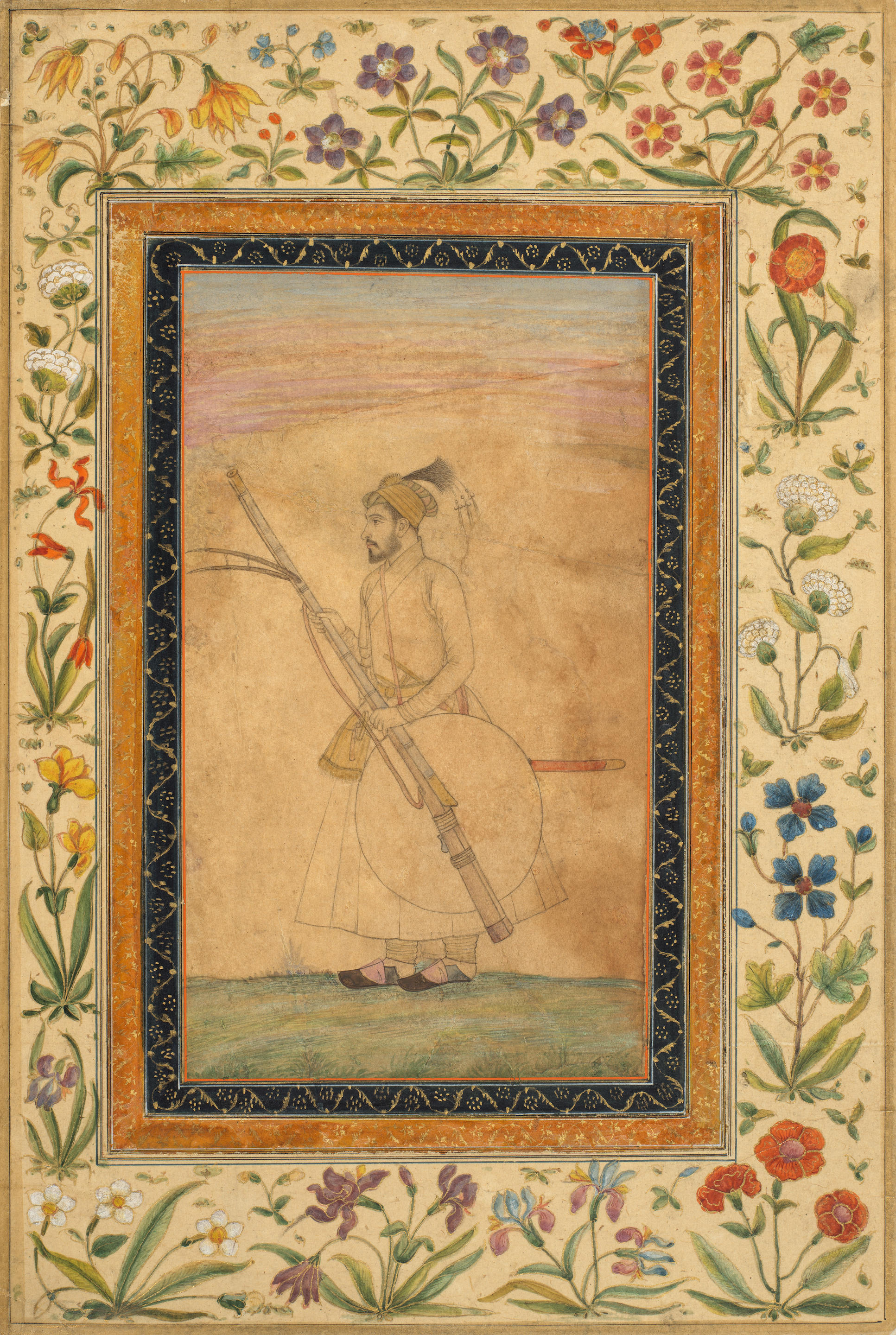
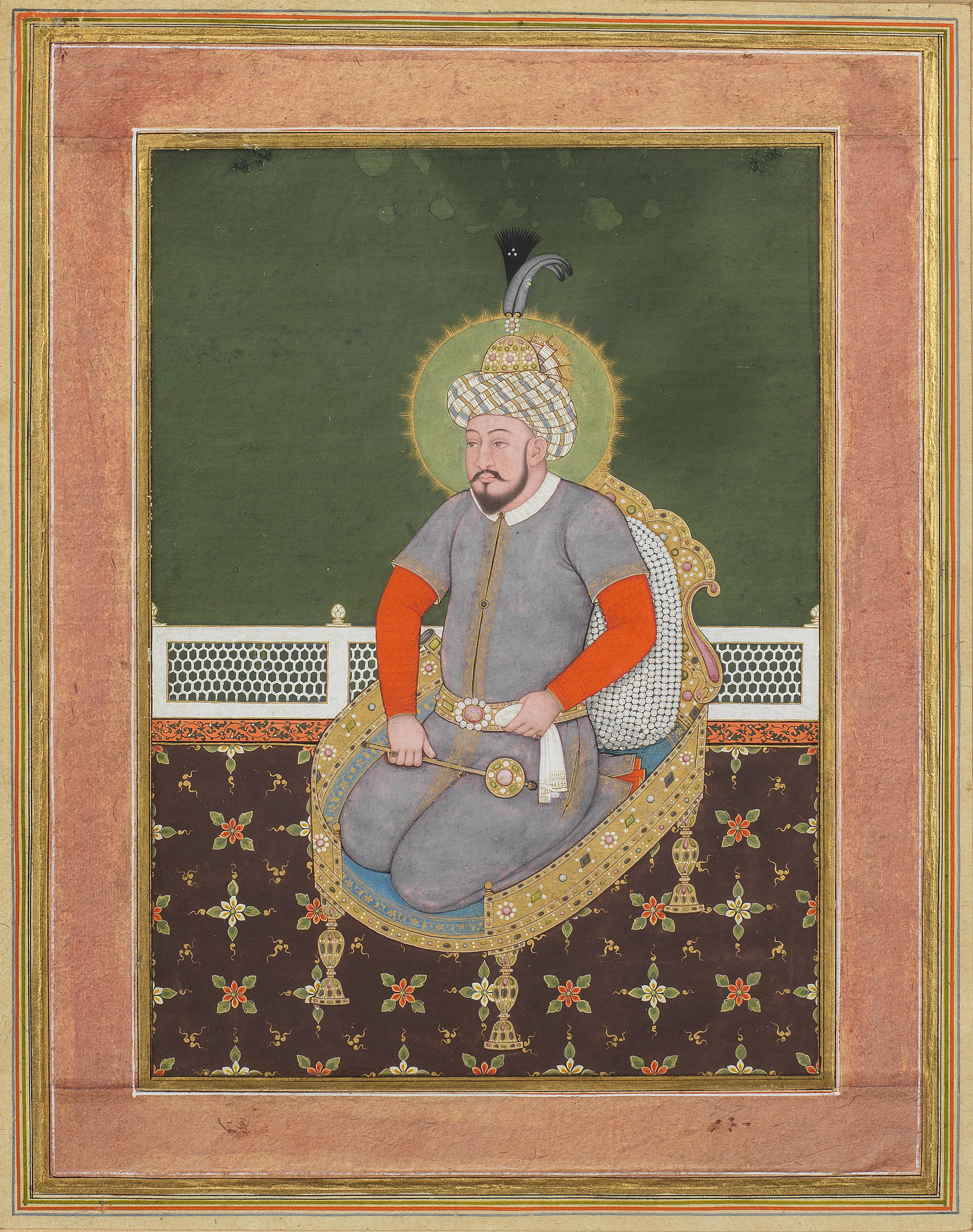
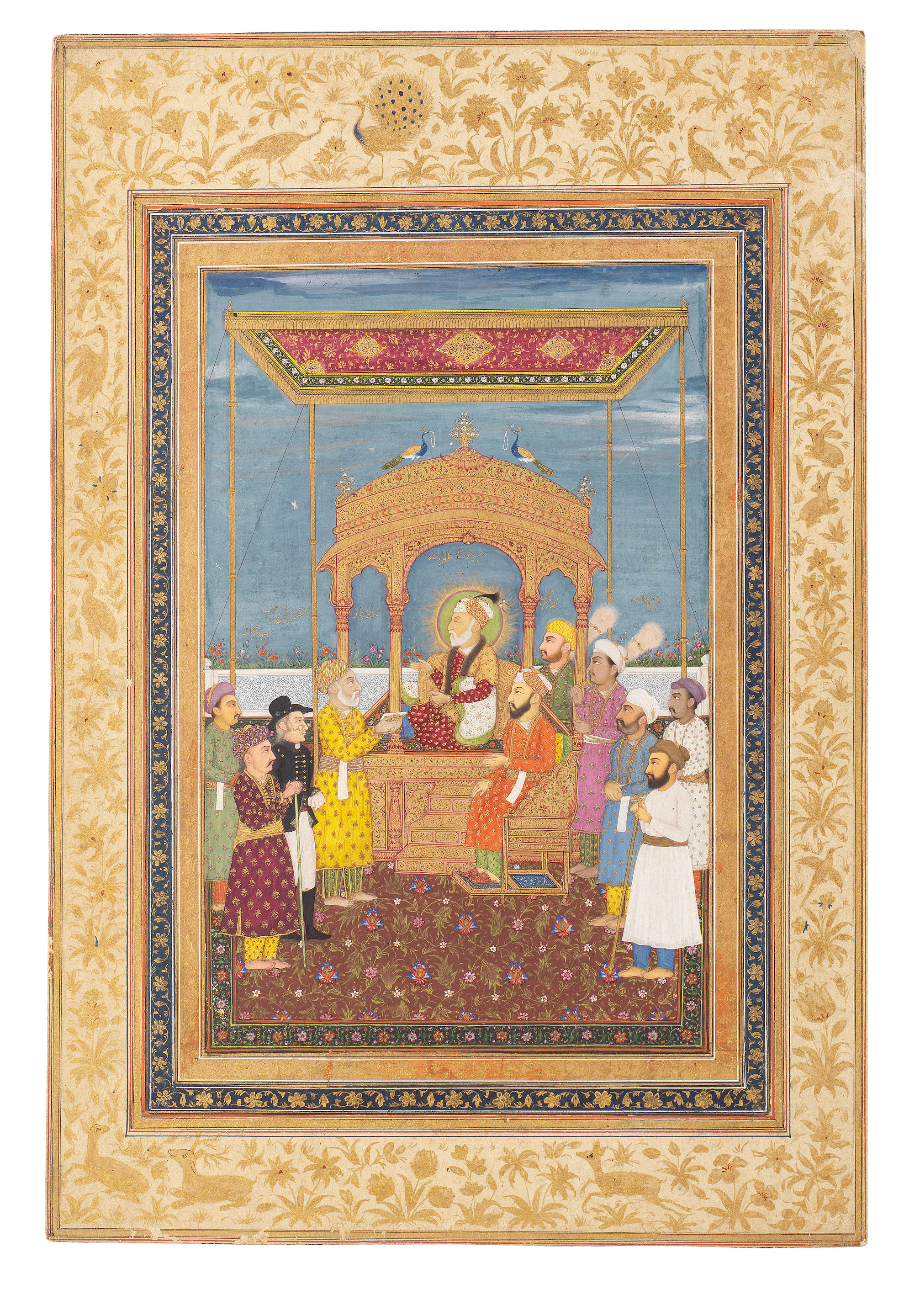
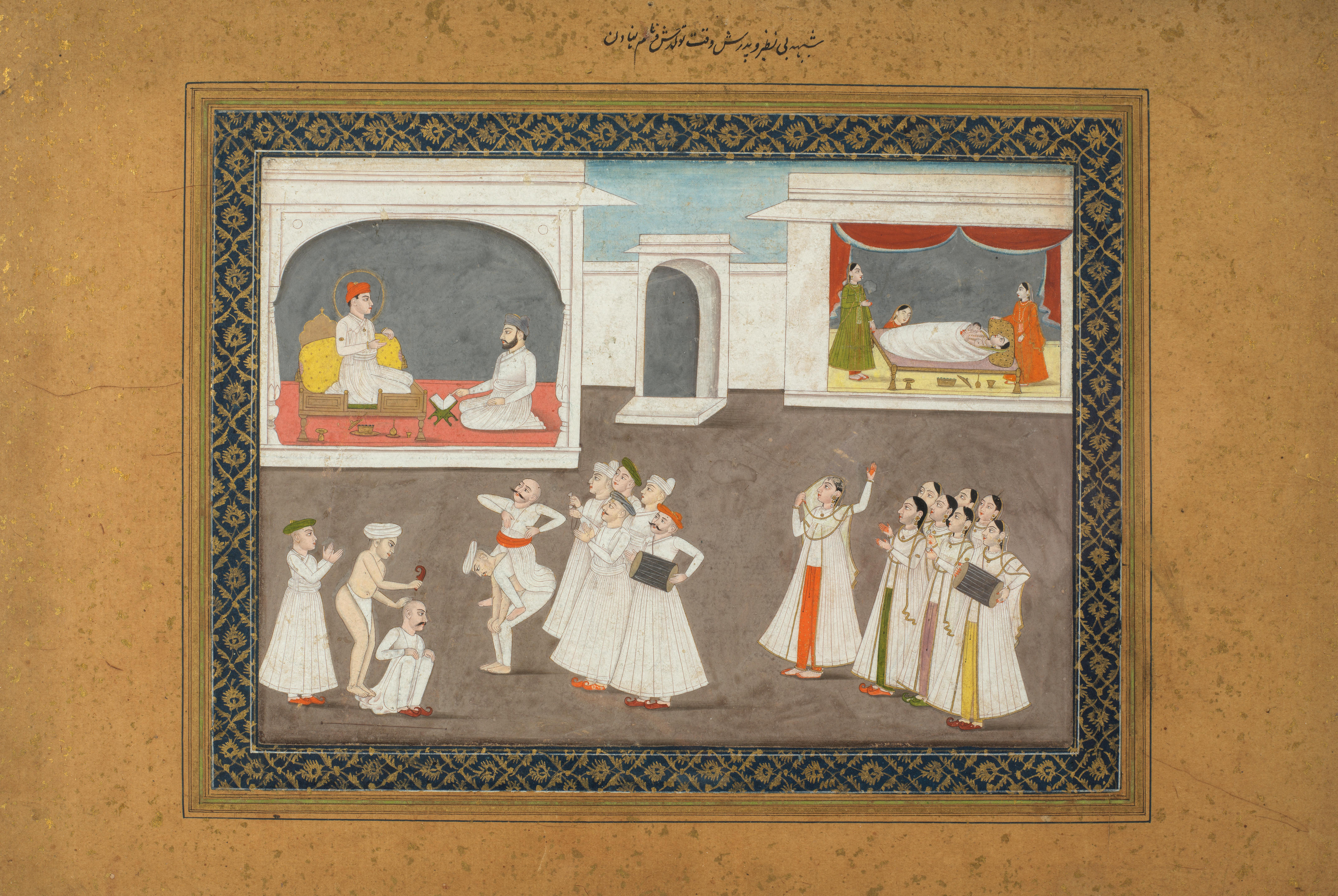
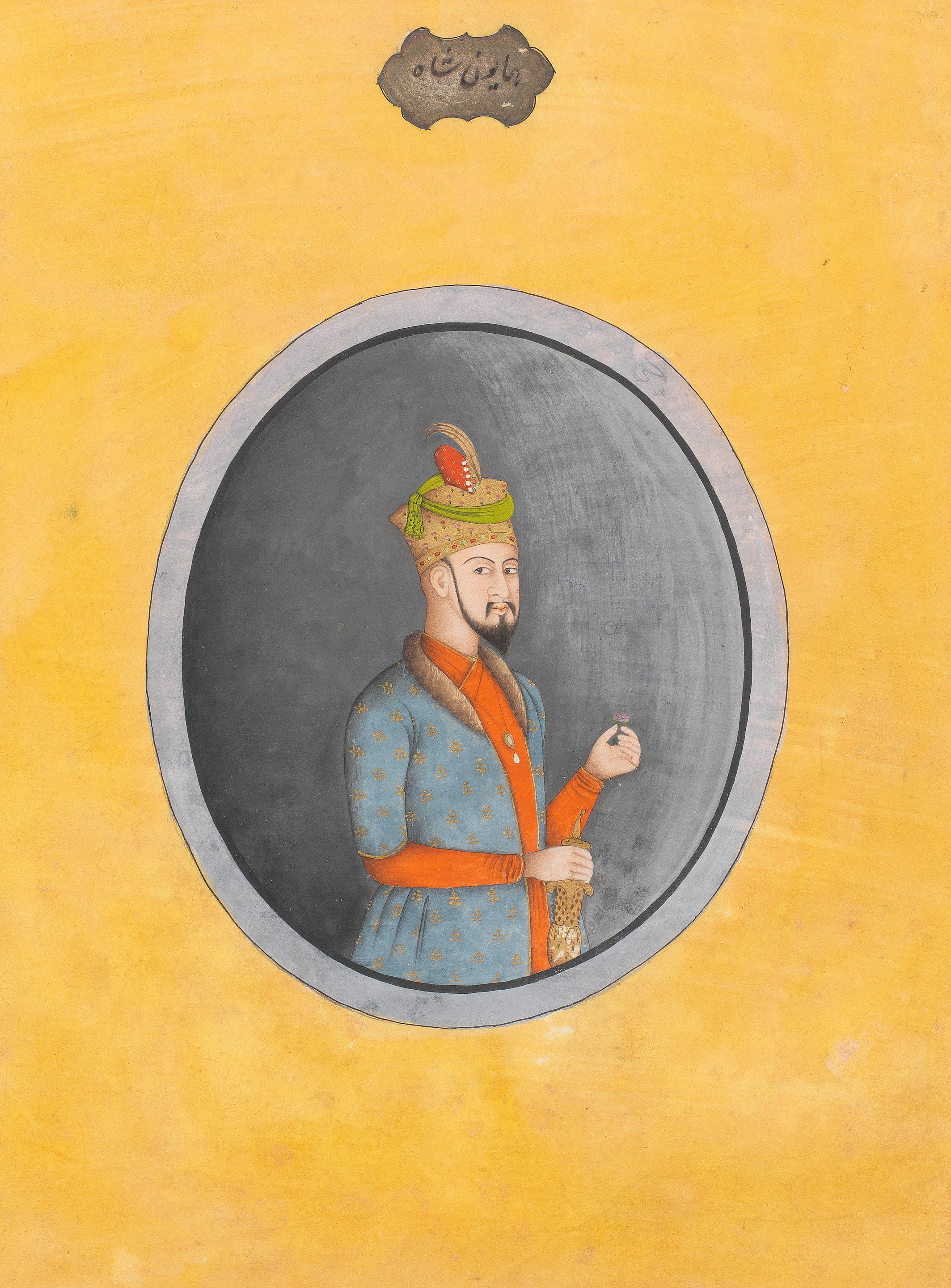
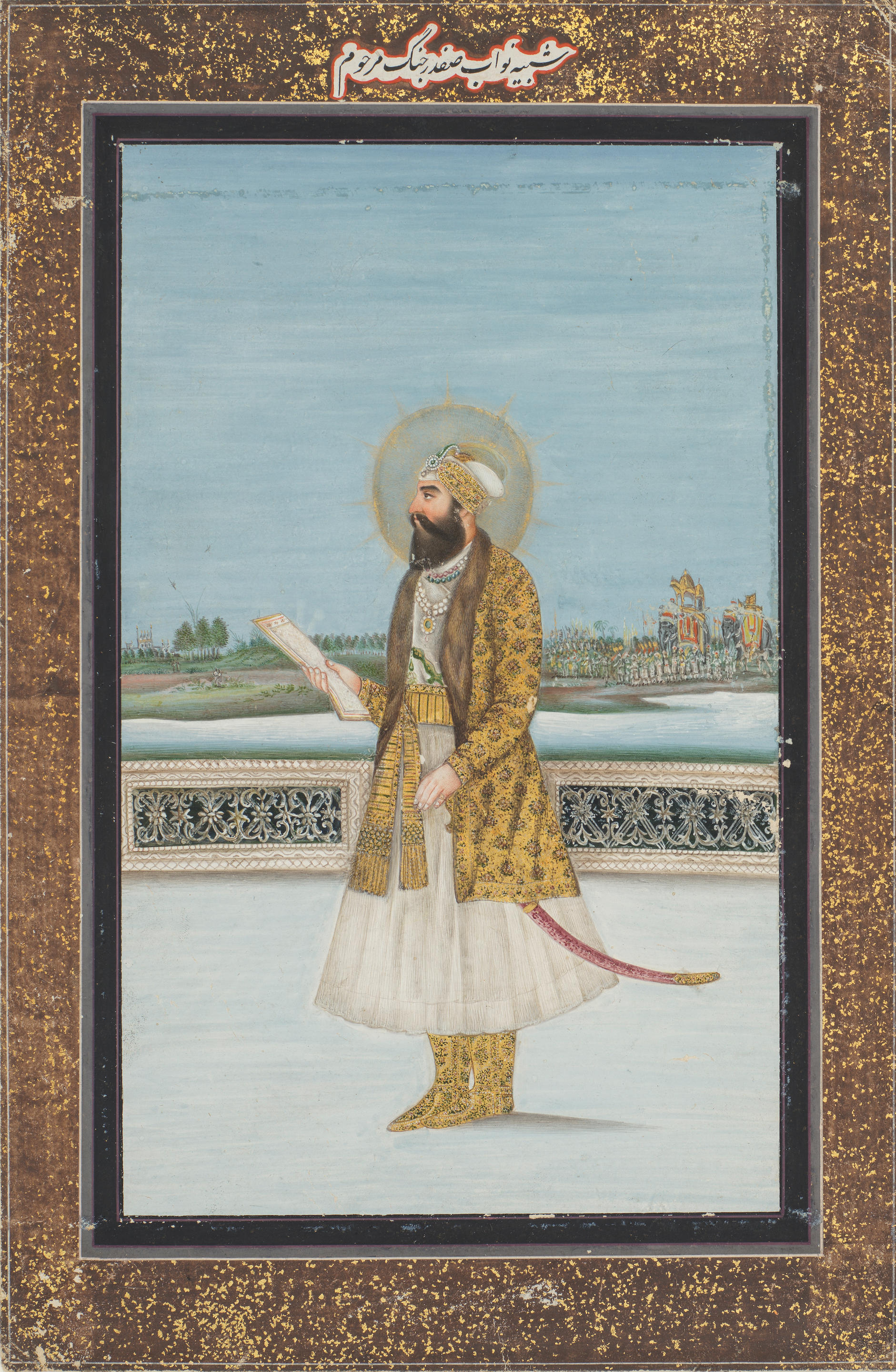

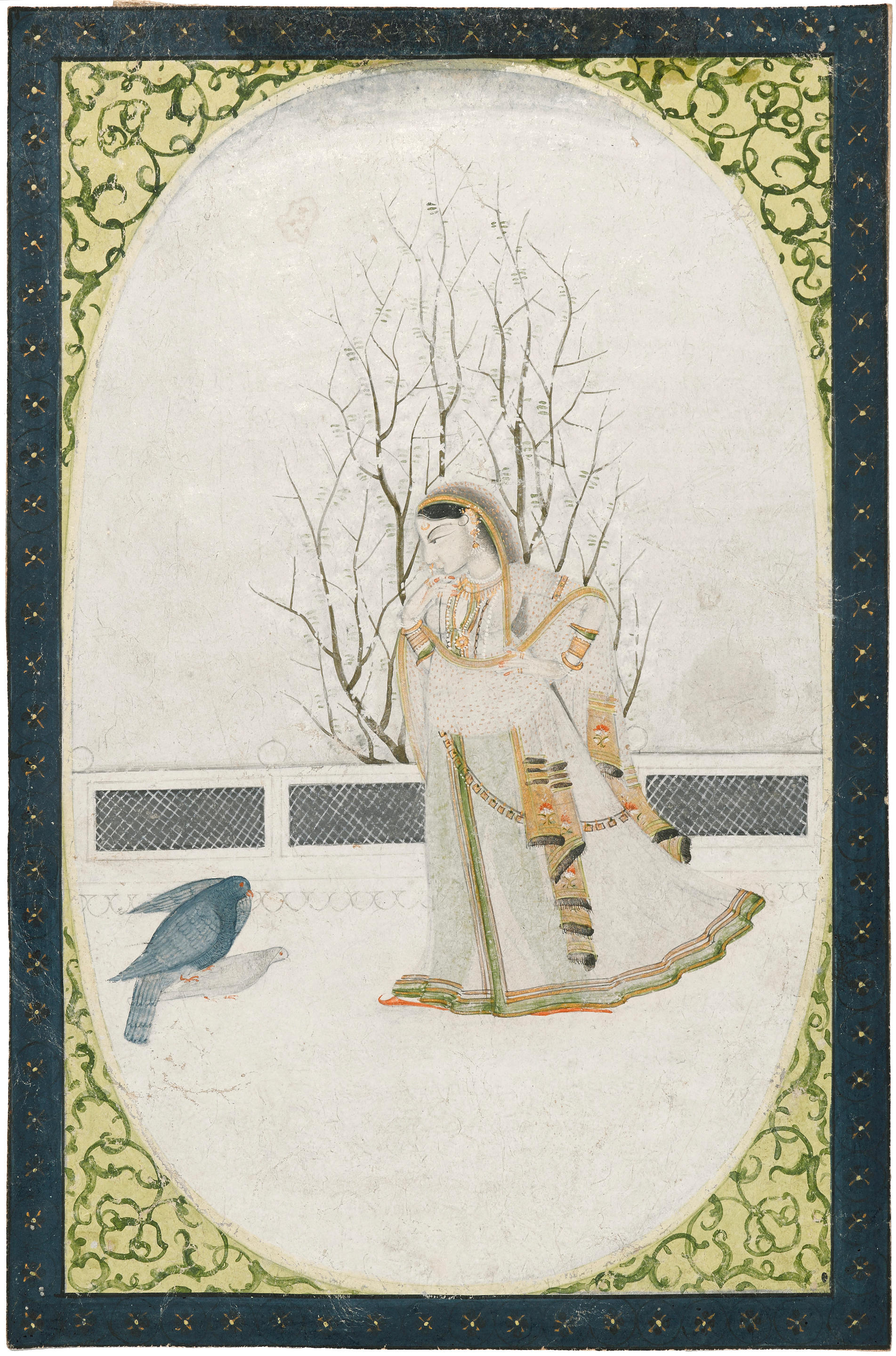
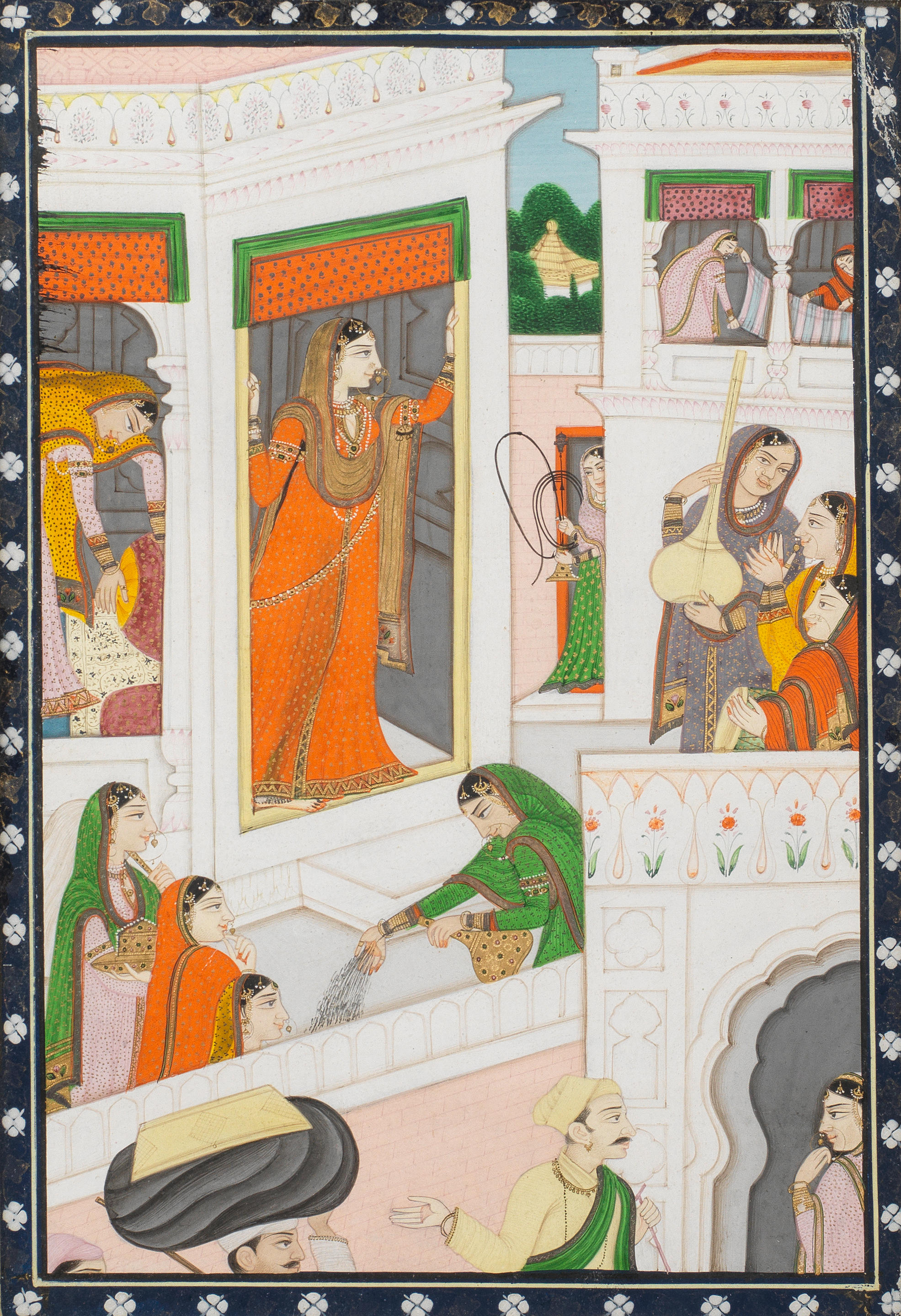
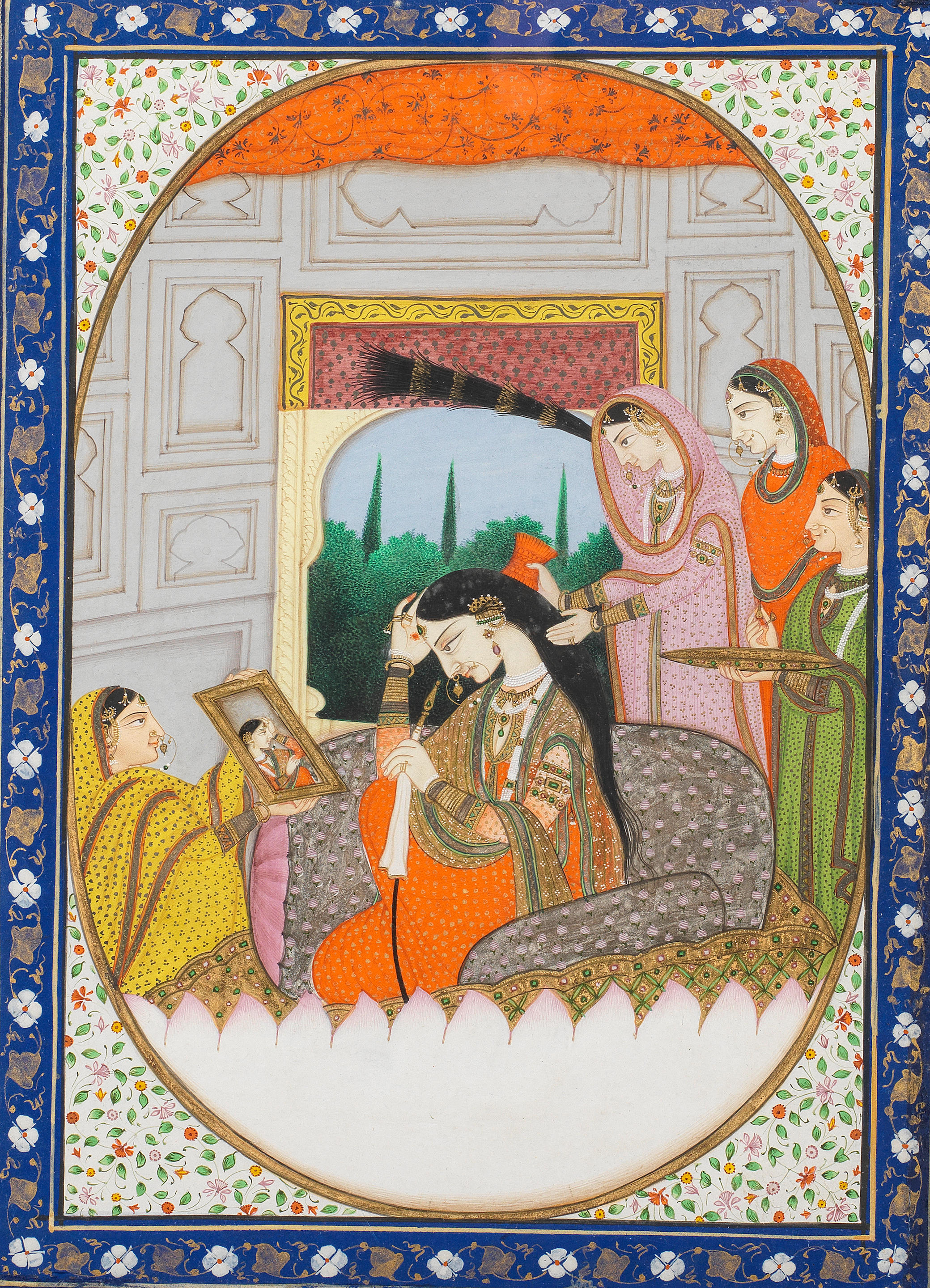
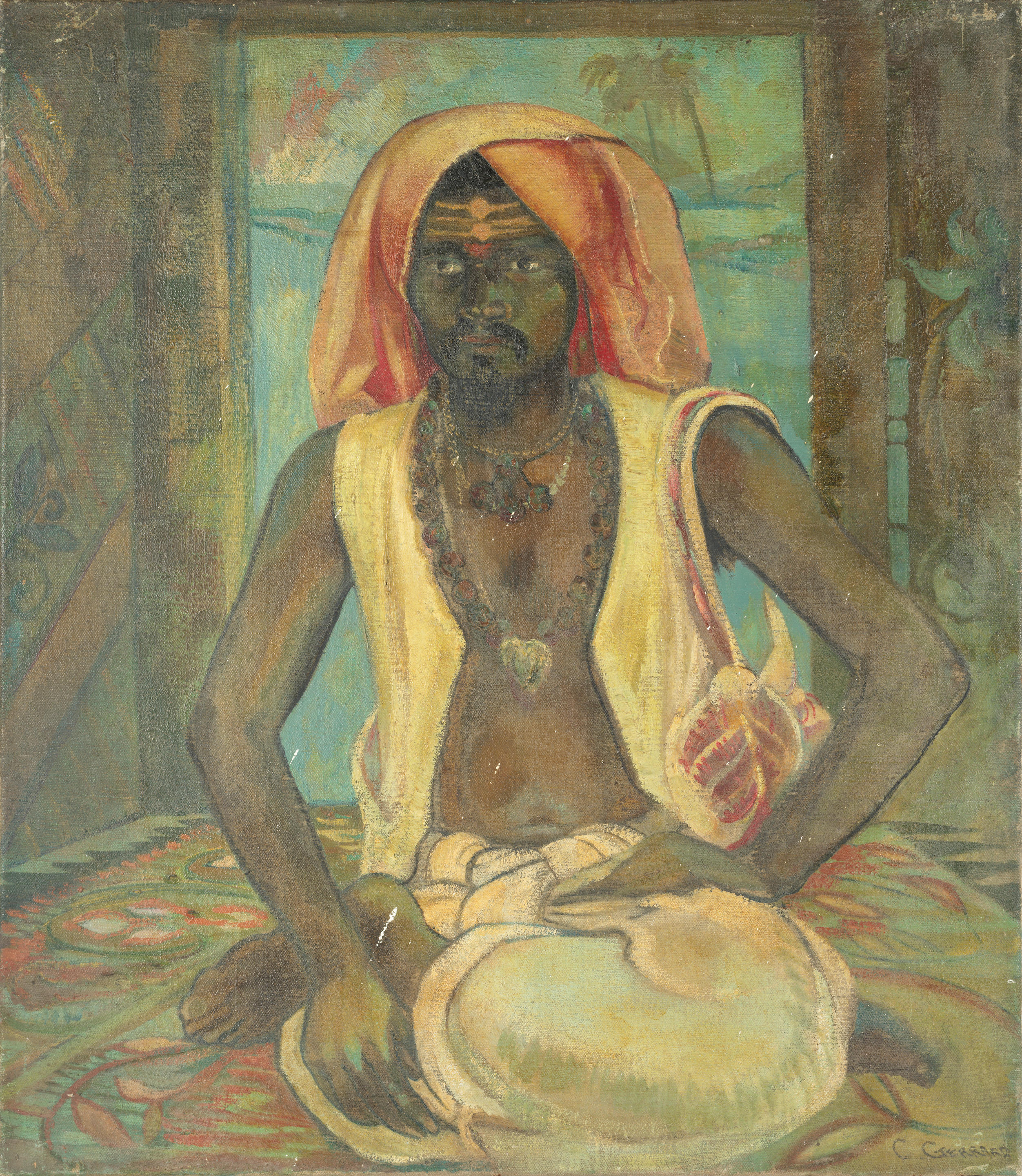

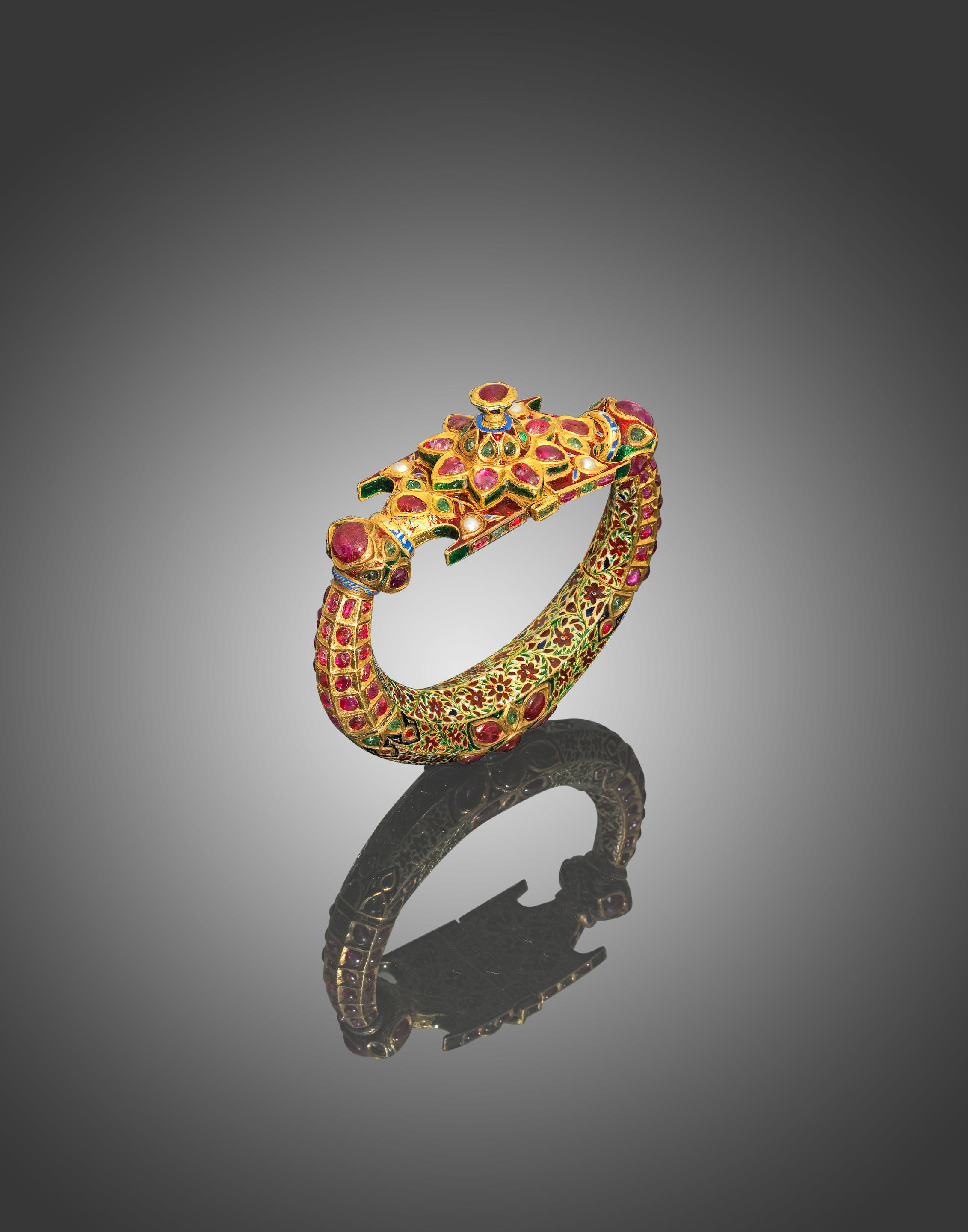
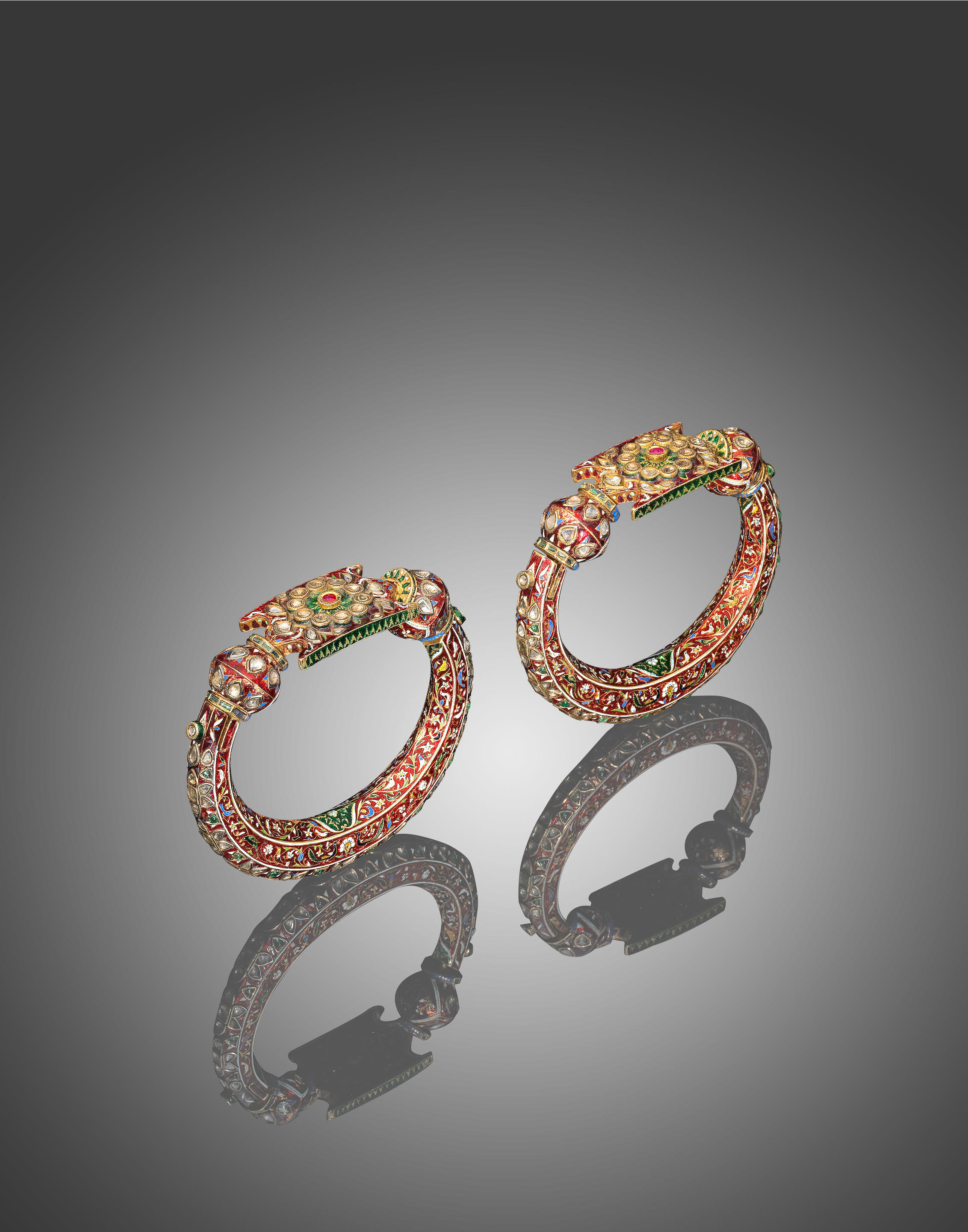
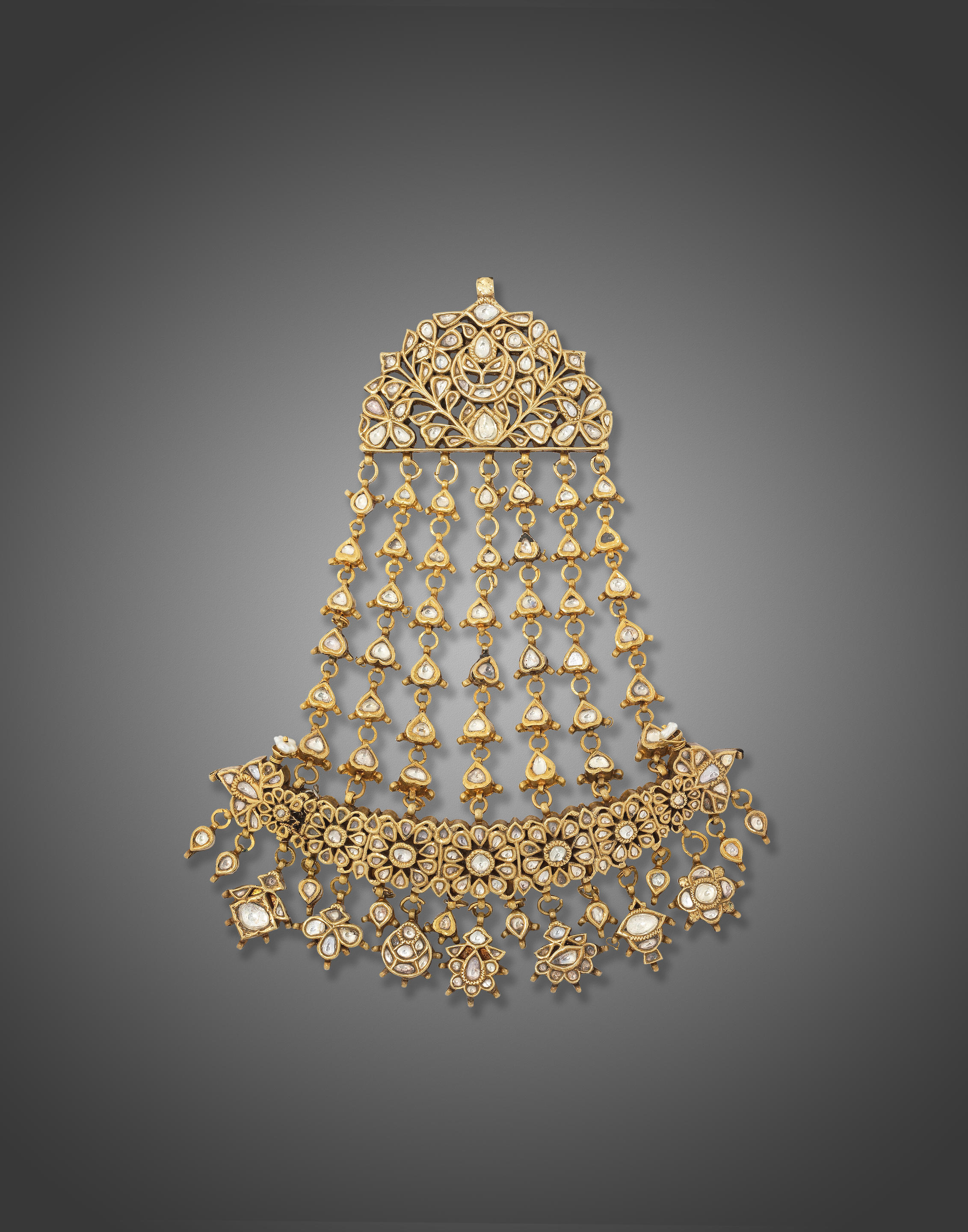
Try LotSearch and its premium features for 7 days - without any costs!
Be notified automatically about new items in upcoming auctions.
Create an alert